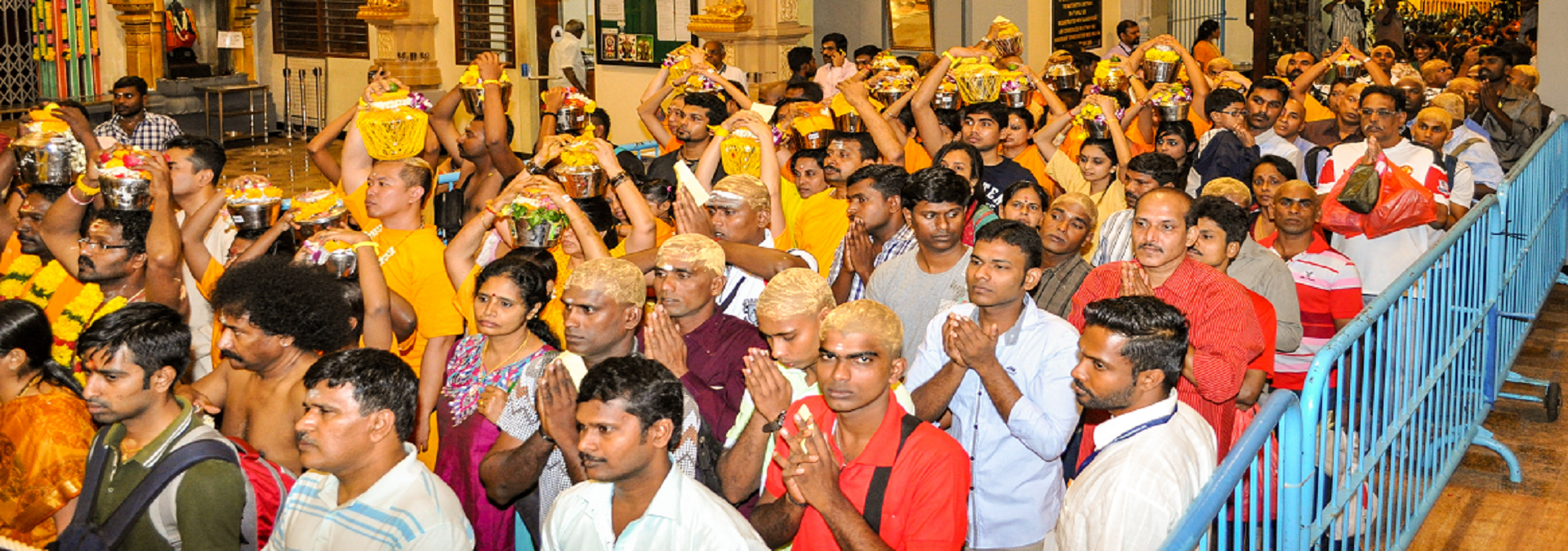
Sri Thendayuthapani Temple
THAIPUSAM
The Epic
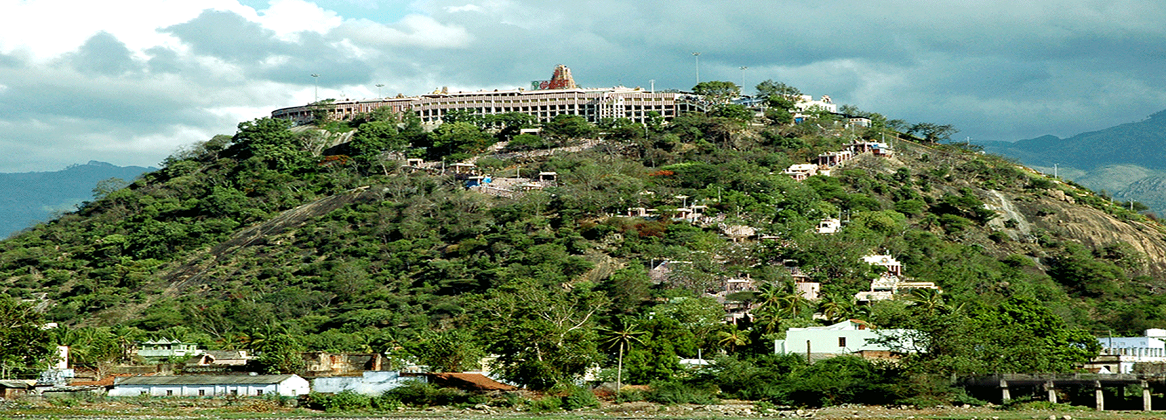
A rich epic lies behind the origins of Thaipusam. The great Saint, Agasthya, instructed his student, Idumban to uproot two hills called Sivagiri and Shakthigiri belonging to Lord Murugan and bring them back to him. Idumban flew to Mount Kailai Range where the hills rested and picked them up ready to fly back. But alas, Lord Murugan had other plans. He wanted to test Idumban’s mettle and devotion to his master. He reduced his size, to that of a small child and promptly stood atop one of the hills. Suddenly Idumban found that he couldn’t carry the hills anymore. To his bewilderment, a child was standing haughtily on the hill. Idumban humbly requested the boy to get down. When the child refused, Idumban flew into a rage and tried to attack him, only to find himself falling like an injured bird. Lord Murugan then reverted to his original self and appeared before Idumban. “I am pleased with your courage and determination,” he said. “Your devotion to your guru is admirable. I now bestow on you the honor of being my guardian” Lord Murugan then proclaimed that henceforth, those who carried kavadis to see him, would receive his blessings. Today, thousands of Hindus carry kavadis as offerings to the Lord during Thaipusam. The kavadis symbolize the hills of burden that Idumban shouldered.
The Kavadi
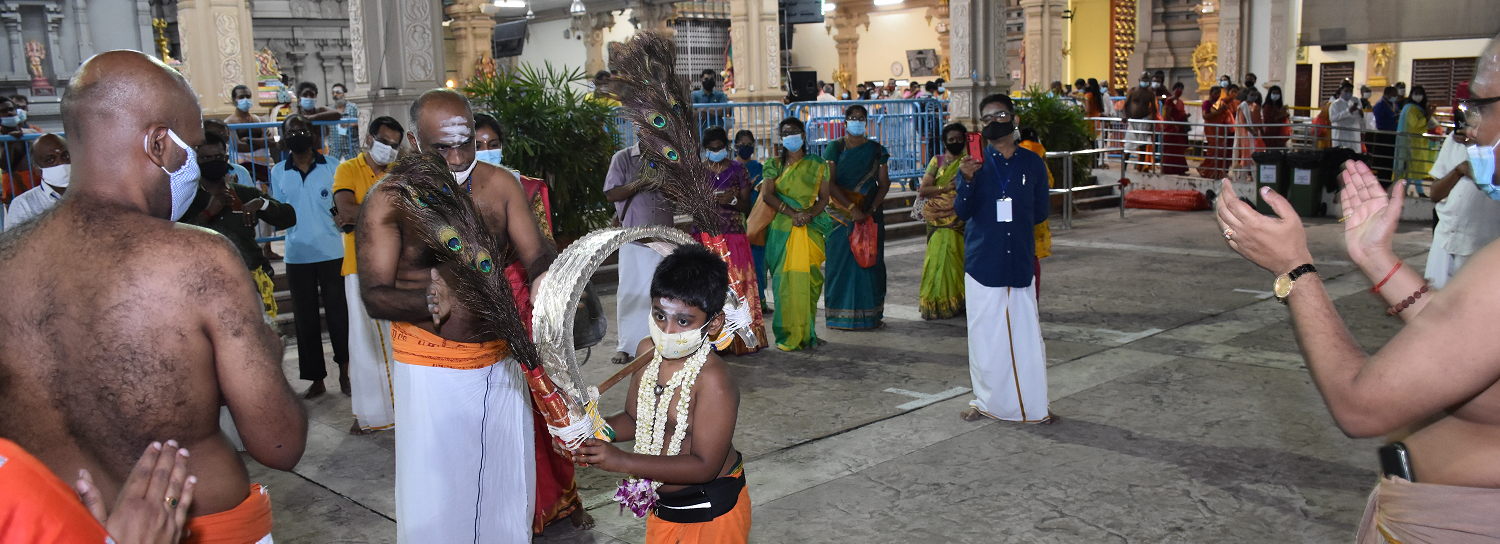
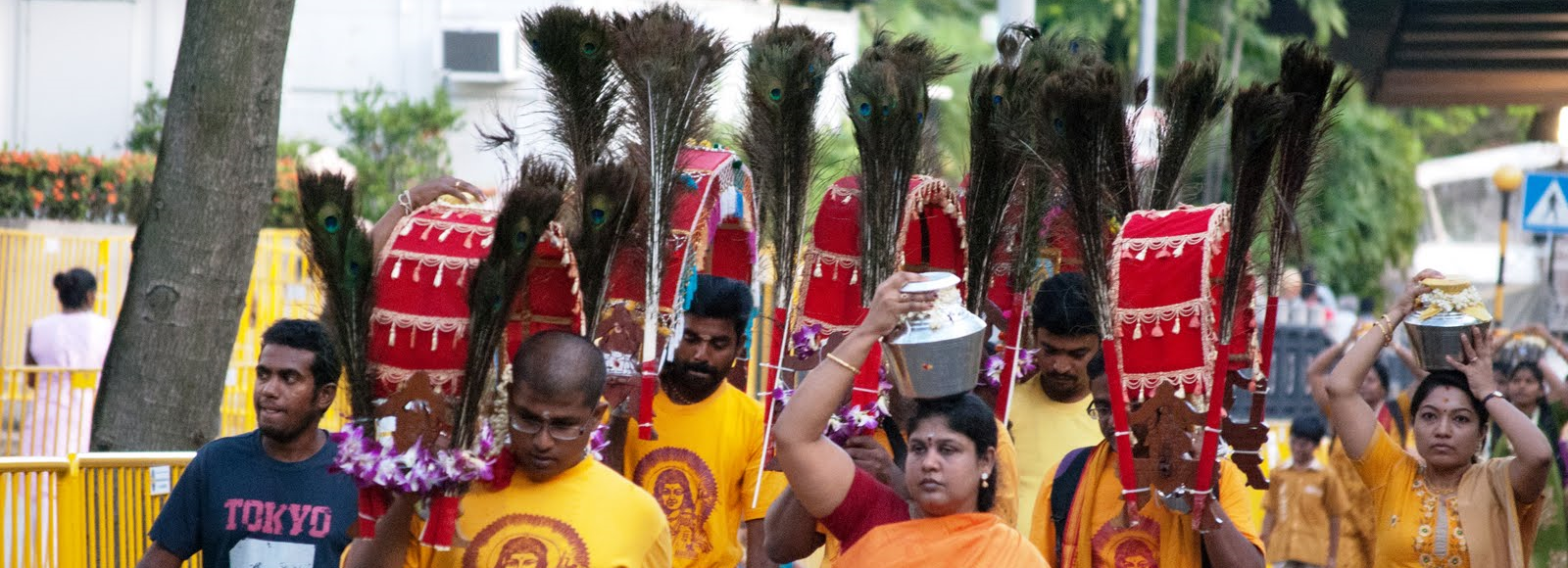
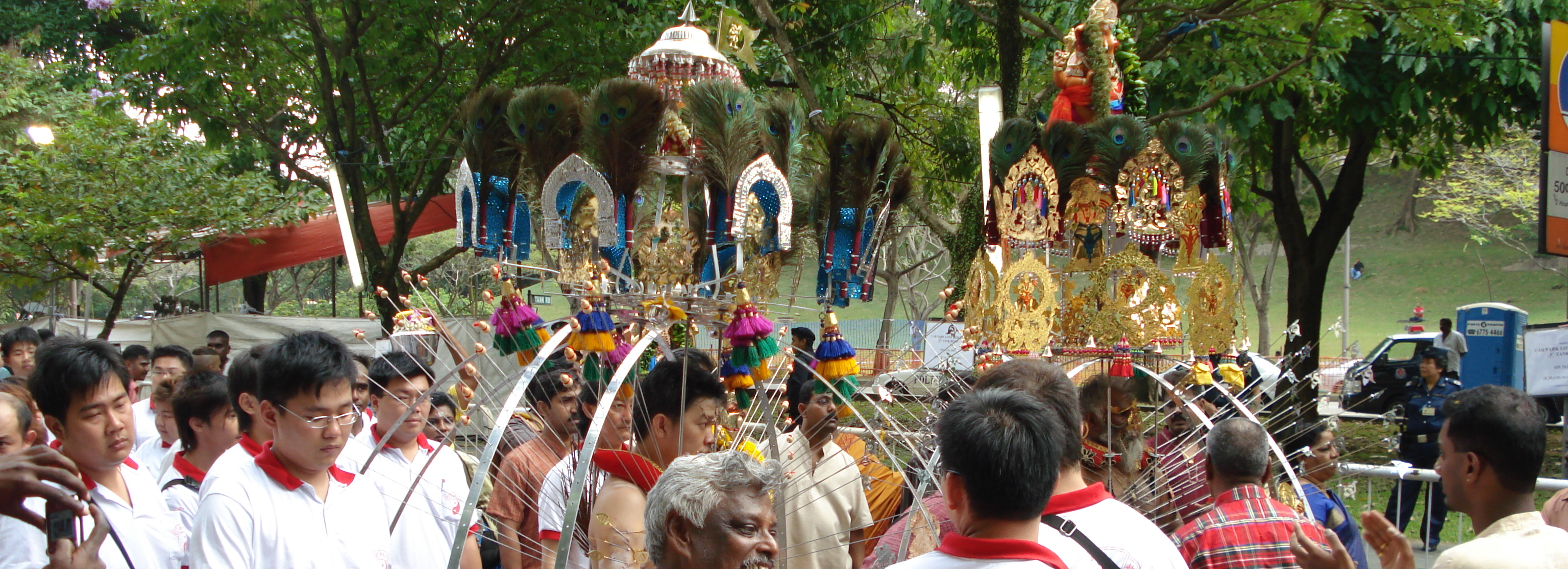
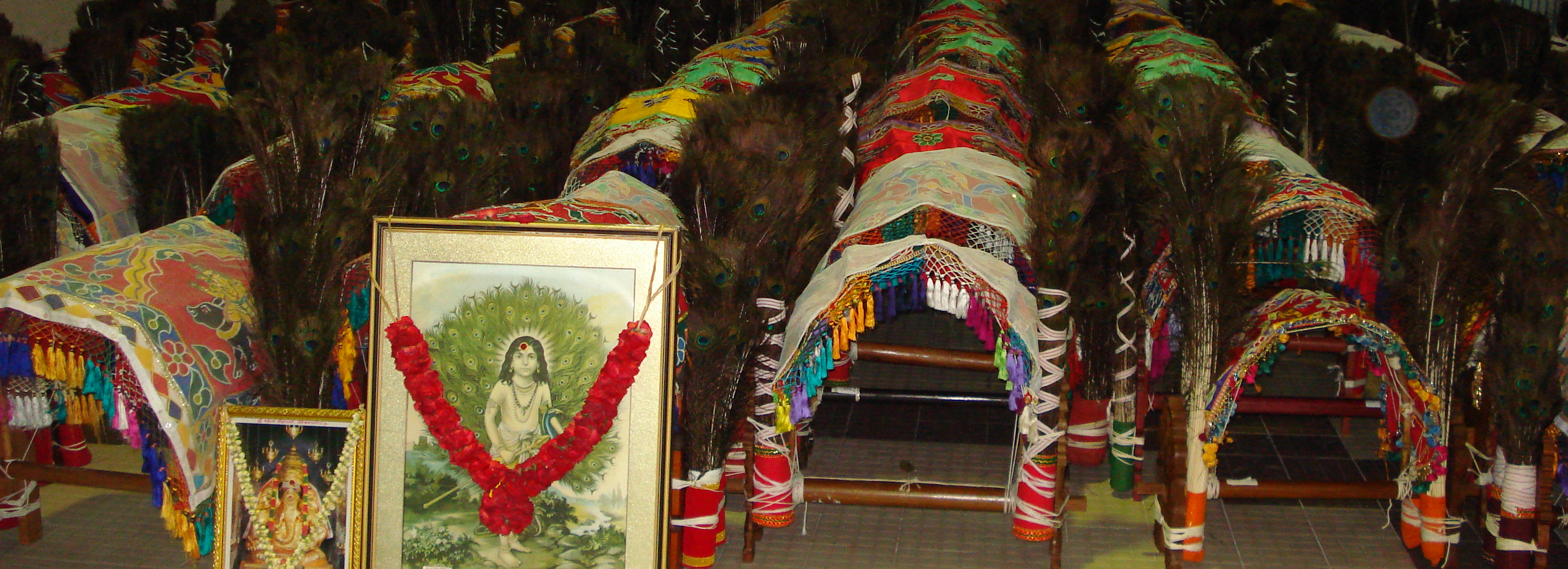
Generally, people take a vow to offer Lord Muruga a Kavadi for the sake of tiding over a great calamity. Though this might, on the face of it, appear a little mercenary, a moment’s reflection will reveal that it contains in it the seed of supreme love of God. The worldly object is achieved, no doubt, and the devotee takes the Kavadi. This is also a method that ultimately leads to the supreme state of devotion.
The Kavadi has various shapes and sizes, from the simple shape of a hawker’s storehouse (a wooden stick with two baskets at each end, slung across the shoulder) to the costly palanquin structure, profusely flower-bedecked and decoratively interwoven with peacock feathers. In all cases, the Kavadi has a good many brass bells adorning it and announcing it as the Kavadi-bearer draws it along. As the Kavadi-bearer very often observes silence, the bells are the only eloquent signs of a Kavadi procession.
Thaipusam in Our Temple

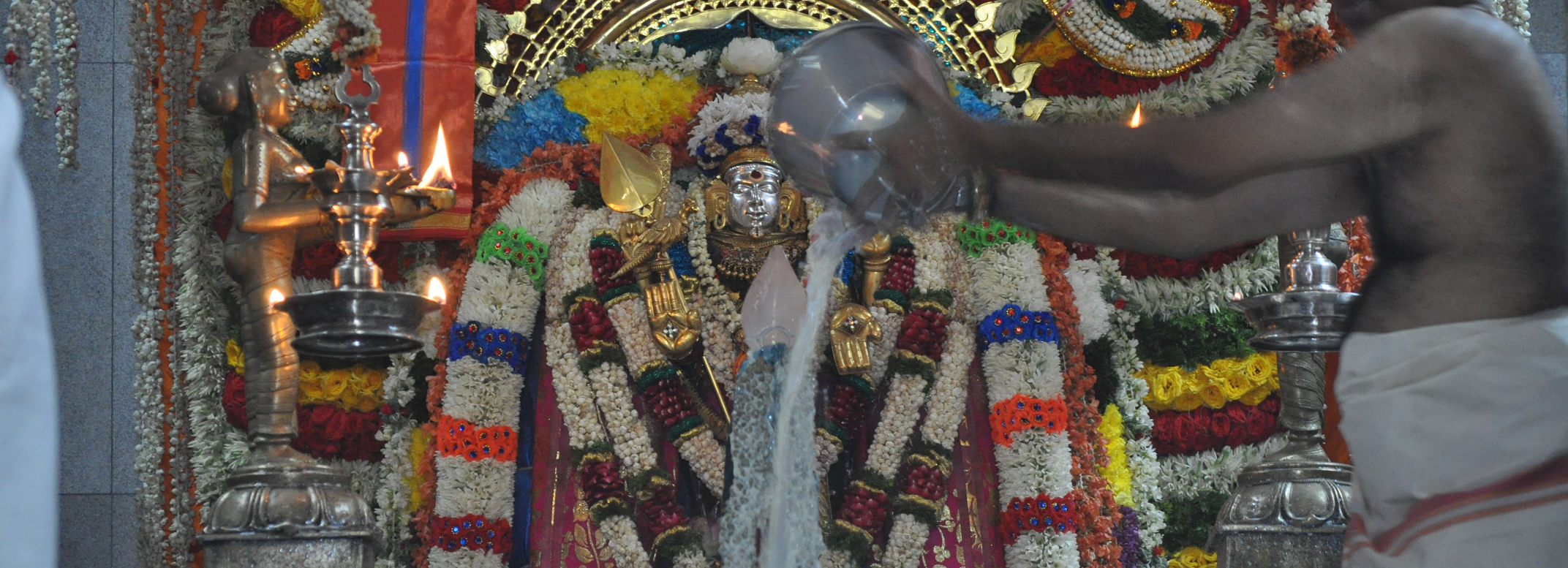
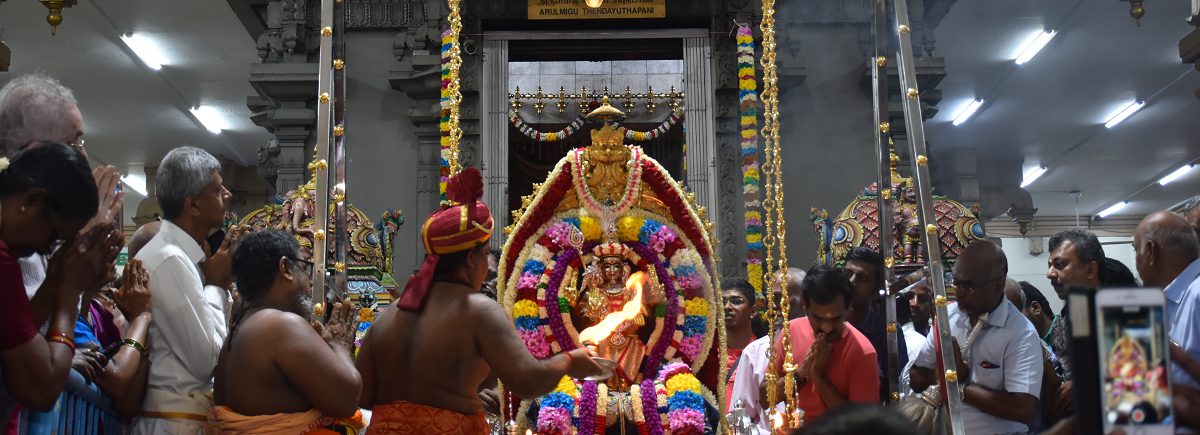
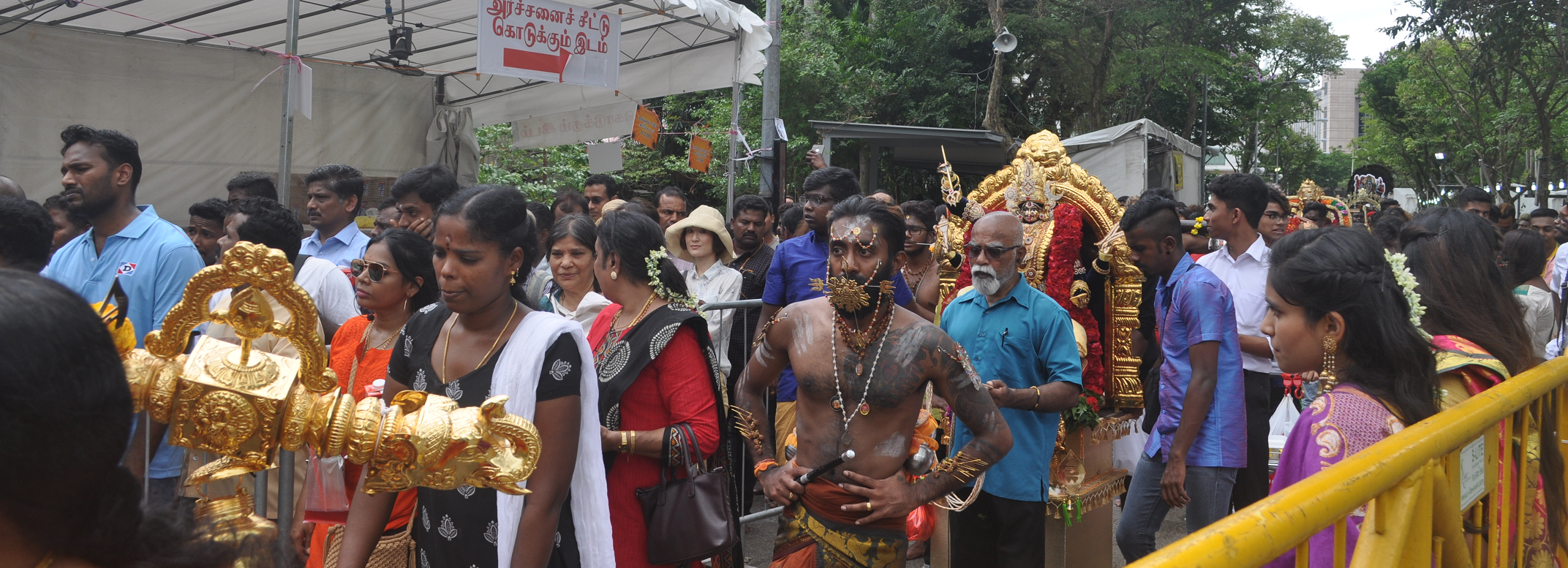
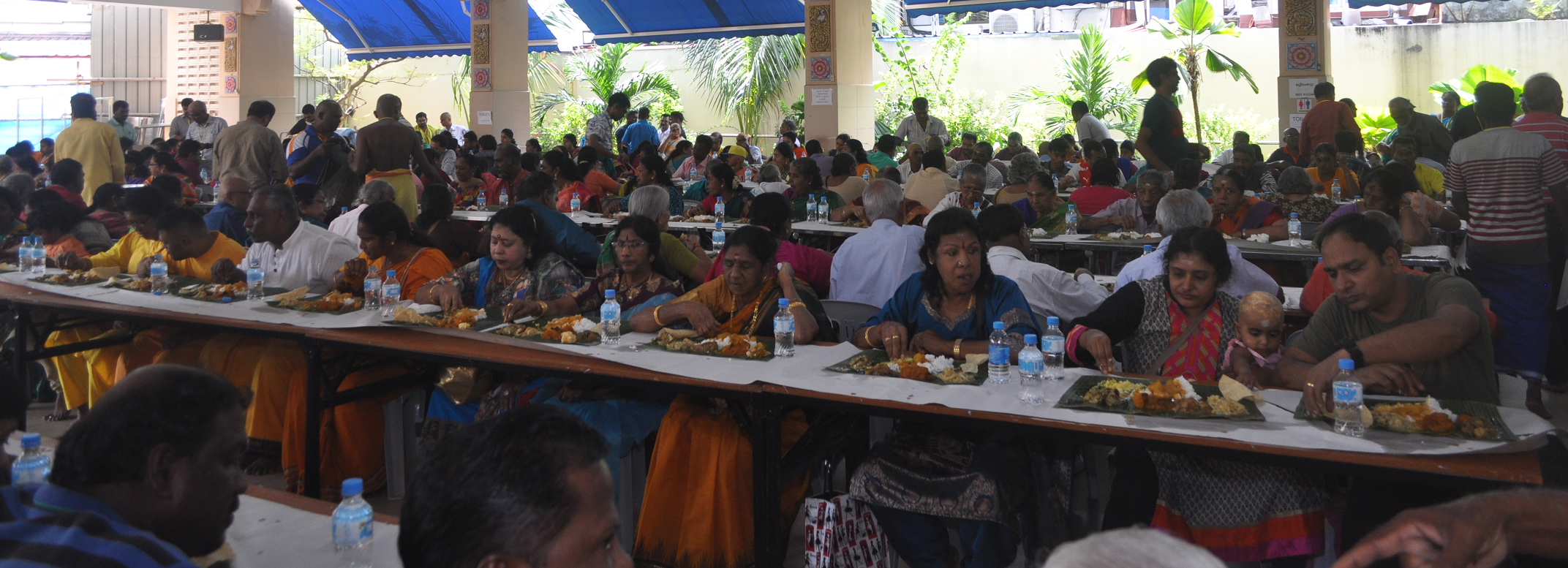
ThaiPusam is celebrated during the Tamil month of ‘Thai’ around January/February. On the previous day, the deity Lord Murugan is taken on a city procession in the Silver Chariot to Sri Layan Sithi Vinayagar temple at 73 Keong Saik Road and returns in the evening followed by Chettiar Kavadies. This event is popularly called as Punar Pusam or Chetty Pusam in Singapore.
On ThaiPusam day, hundreds of devotees offer prayers either by piercing their body with spikes and lemon, pulling a chariot or carrying Kavadis from Sri Srinivasa Perumal Temple, Serangoon Road. The devotees then offer their prayers and fulfill their vows. The Vel (holy spear) in the sanctum is showered with milk continuously for hours.
Several Chinese devotees and people of other religion and races also fulfill their vows on this day.
